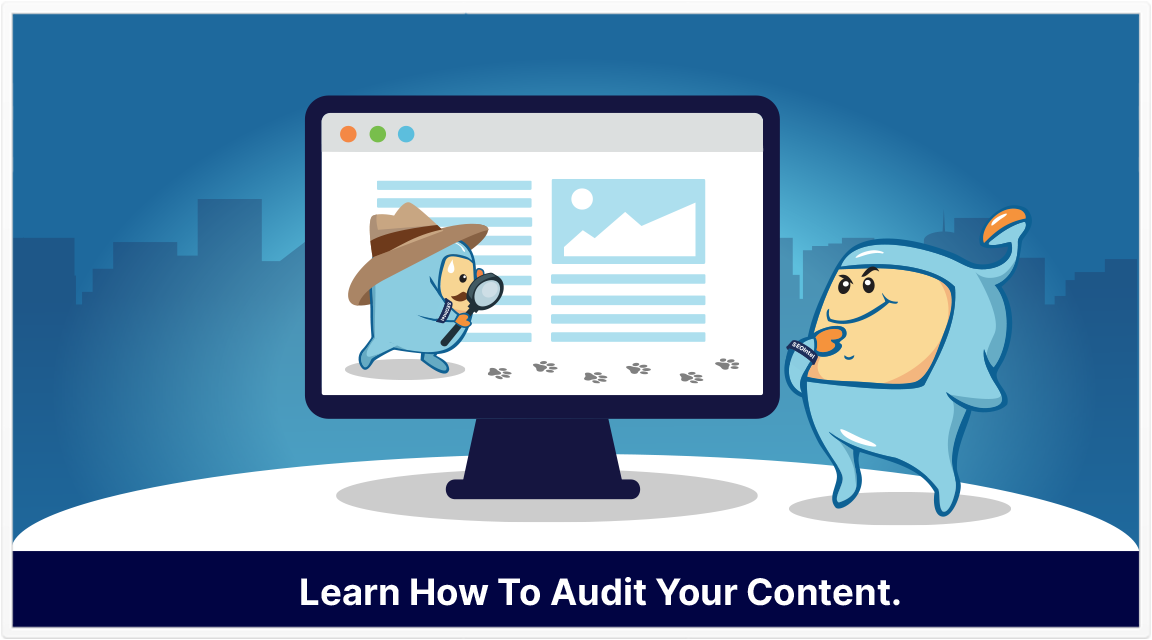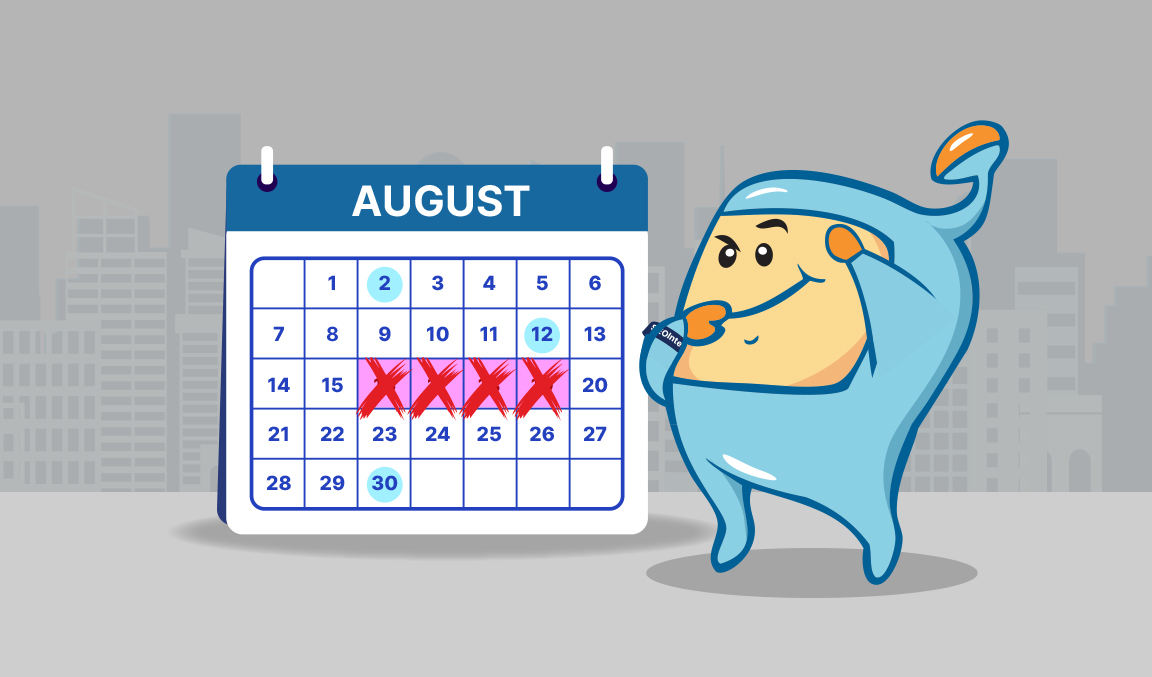The initial thought while you’re trying to accomplish your content marketing objectives might be to produce and share fresh content.
The issue, however, is that such content frequently vanishes into oblivion and is infrequently used again.

For some people, this is a sad truth because one of the most effective content marketing strategies is updating and repurposing already existing information.
You can find information that needs to be improved or that can be converted into different formats by doing thorough, routine content audits.
Here is what you will read in this article:

A content audit is a procedure for assessing the current material on your website and identifying content that can be updated, eliminated, or redirected.
The ultimate goal of content audit is to identify your content strategy and the workflow for creating content's strengths and weaknesses so that you may modify it to better meet your present marketing objectives.
Any level of business, from microbusinesses to large multinationals, can benefit from it.
Once you've begun producing content, it's a good idea to periodically conduct a content audit to evaluate its effectiveness.
It's comparable to getting a health checkup from the doctor or having your automobile serviced annually for an inspection.
Keeping up with website maintenance will improve performance.
A content audit examines your content initiatives so you can assess your strategy and determine what is and is not working.
You can move forward with content marketing decisions that are better informed by comparing content data across web pages.
You can also address any problems that could be currently affecting performance.
And similar to SEO site audits, content audits can help you improve your content marketing by identifying underperforming material, improving content, applying lessons learned to future content, and assessing your top authors.

You need to find material that isn't driving any traffic or producing any purchases.
Look at the posts that perform the worst at the bottom of the list and think about the following:
Google Analytics makes it simple to detect material that is not doing well.
Above all, going through the first step, this should provide you with insight into how you may change your material going forward.
In other words, it might be time to rethink your strategy if the top ten performing pages aren't also the ones that generate the most conversions.
What can you easily alter to improve outcomes? Do more of what works, less of what doesn't, and iterate over time.
This is the sustainable strategy.
Small tests like this one can be beneficial.
Following your discovery of this low-performing contents, you should either:

It's critical to choose the type of content you'll be reviewing before compiling a list of URLs and metrics.
You can check the internal content, like blog posts, news articles, instructional materials, product descriptions, and landing pages, as well as the publications you get from outside sources.
Other content kinds, including video, PDFs, and interactive pieces like games, tests, and quizzes, can also be evaluated.
It's time to focus on the content that remains once you've either eliminated, merged, or redirected your worst-performing content through assessing your content specifically using the objective metric of traffic.
Four general categories can be found in content marketing metrics:
For example, if you want to know which topics are popular and create more content about them, you should look at user behavior and engagement metrics.
If you want to improve your SEO performance, look at the number of backlinks you have and your search engine rankings.
Data collection is a difficult and time-consuming process.
Typically, you must recover data from multiple sources and manually enter it into your spreadsheet.
Use a content audit tool that automatically collects data based on your goals and metrics to save time.
Here are some analytics tools that can help with a content audit:
This tool assists you in determining which content performs best in terms of traffic, engagement, and conversion rates.
You will also be able to estimate the effectiveness of your content in achieving your marketing and business objectives.
This tool enables you to monitor your position for desired keywords.
You can use this tool to locate material with strong SEO potential (for example, web pages that ranked in the top 5 before, or pages ranking close to the top positions).
You may immediately improve your search engine rankings by upgrading these sites.
With the use of this tool, you may learn more about your file kinds, metadata, and page-level information, such as screenshots of each page and photographs, documents, and videos.
Your results can also be sorted, and data can be exported for offline examination.
This tool helps you do a customer journey study by analyzing user behavior to determine what is and isn't working on your website.
To find places that need further improvements, you can evaluate the impact, performance, and usability of your page's elements.
This tool helps you find technical problems with your website, which is useful if one of your key audit aims is to raise your rankings.

To get a complete view of the state of the material on your site, you must look at your content analytics in their entirety.
For instance, while receiving a lot of traffic, your website may have a high bounce rate and brief session duration.
This indicates that although consumers are interested in your subject, the information didn't meet their needs.
In this situation, you must evaluate several aspects of your content to determine why users are abandoning your website.
The issue may be caused by the slow page load time, CTAs, or the relation of your content to the title.
The various stages of the buyer's journey should also be considered.
Although your "Awareness" material may draw more visitors, its conversion rate may be lower.
It's possible that your "Consideration" article receives less traffic but produces more leads, and so forth.

For you to identify your engaging posts and how to engage to them do these following:
Or
You can use this strategy to your content categories if you've already organized your material into groups.
Find out, for instance, which content categories are most shared on social media or are most frequently referred to by other users.
This will clarify where you should concentrate your efforts.

Although strictly optional, this step can make it easier for you to spot trends and insights.
In your spreadsheet, you can add new tabs to categorize your content and compare the outcomes.
You might, for instance, have tabs that categorize content according to format, such as blog or infographic.
Your content might be divided into topic tabs.
It might be worthwhile to take a look at the length of your material and compare it by combining sections with similar durations.
Aligning your content with where leads are in the buying process is another method to arrange your material.
You might discover that a piece of your "awareness" content is actually converting readers into customers.
Or perhaps a landing page with a high conversion rate has a high bounce rate.
It's entirely up to you how you arrange your insights.

Based on the pages that are performing the best on your website, your content audit should reveal who your current consumer is.
You should use the information you obtain from a content audit to your consumer personas.
This can entail developing new buyer personas altogether or further developing your current ones.
Examine the specifics that define each of your current buyer personas.
Based on what you discovered during your content audit, modify them.

Keep in mind that you should do another content audit in about 6 months to assess the effectiveness of your new material.
Look for broken links and ways to improve your content's optimization for your target keywords during each successive audit of your content.
You might think about using the 10x strategy, often known as the Skyscraper Technique, for high-performing content.
When you 10x your content, as the name suggests, you make it at least 10 times better than the next best online piece of content that is related to that topic.
Your high-performing posts will have a greater chance of appearing on the first page of search engine results if you use the Skyscraper Technique on them.
Here are some suggestions for enhancing your content:
Search for keywords associated with the content you wish to 10x on Google.
Consider what you can do better as you read the posts of competitors.
Use that approach for your current material.
Keep an eye on the development of any content you update or try to 10x so you can identify the tactics that were successful and use them in the future.
After completing the content audit process, you ought to have a clear route for enhancing efficiency and performance.
In one or more of the areas mentioned above, the majority of websites contain gaps.
Utilizing your audit to guide changes over time and modifying your content strategy as necessary is the key.
In light of this, be honest about your ability to resolve unresolved problems.
A thorough content audit can take more time than you have available depending on how much content you have.
A lean audit, such as the one described above, may be your best option in that situation.
In addition to saving your team time and money, investing in content audit technologies will greatly improve the accuracy of your findings.
Yes, you could manually arrange your data in an Excel spreadsheet if your website only has five URLs.
Automation of content audits, however, is a must for larger websites.